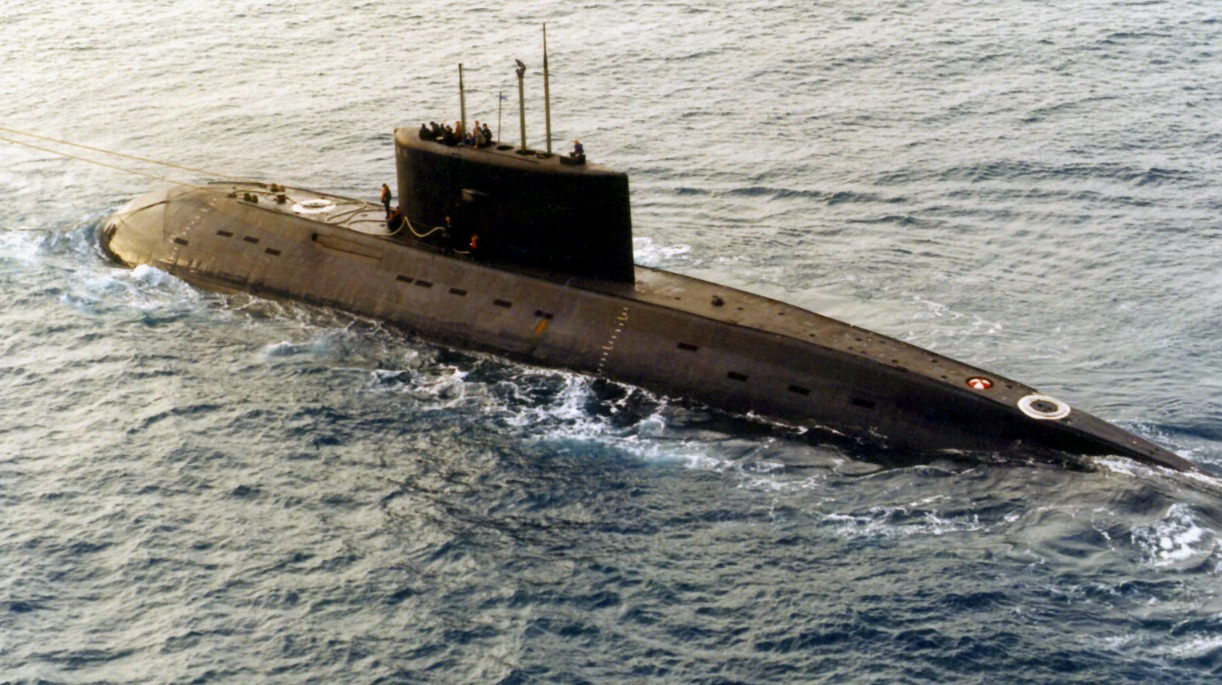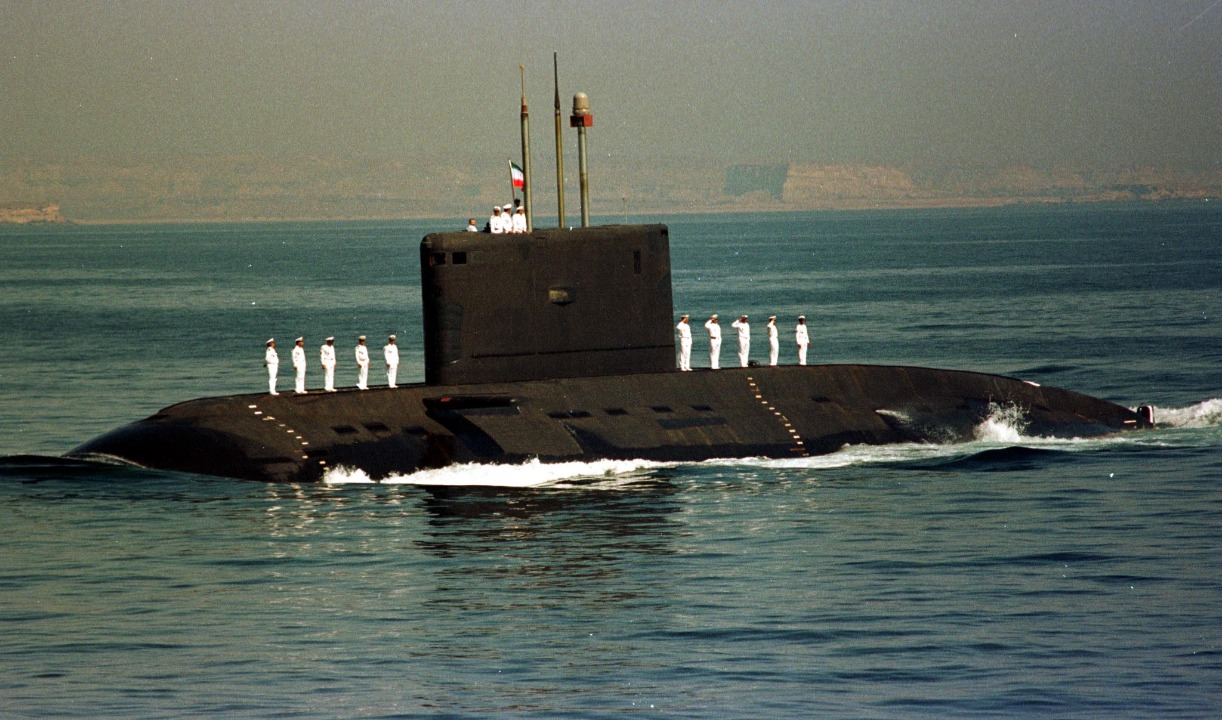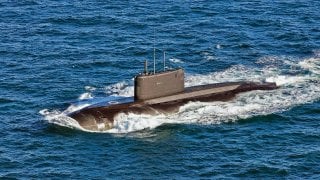Kilo-Class: How a Russian-Built 'Black Hole' Submarine Was Lost 3,000 Feet Down
Since the Cold War, India has been a buyer of Soviet and, more recently, Russian-made military hardware. That included 10 Kilo-class submarines, including the INS Sindhurakshak (S63), which suffered a major fire and explosion over ten years ago in the Mumbai naval dockyard, killing 18 crew members.
Since the Cold War, India has been a buyer of Soviet and, more recently, Russian-made military hardware. That included 10 Kilo-class submarines, including the INS Sindhurakshak (S63), which suffered a major fire and explosion over ten years ago in the Mumbai naval dockyard, killing 18 crew members.
The explosion was so strong, it shook windows in the city's high-rise buildings.
Interestingly enough, the Kilo-class subs are much respected in U.S. military circles and are considered capable, even if developed and perfectected in the 1970s and 1980s. Some experts call these subs the 'black hole' for their stealth capabilities under the sea.
A Kilo-Class Submarine With a Bad History
The story of the Sindhurakshak is not all that different from other Russian vessels built at the end or immediately following the Cold War. It was plagued with problems throughout much of its service life – including a 2010 fire that killed a sailor and injured two others. Naval officials found that the fire was caused by an explosion in the boat's battery compartment that occurred due to a faulty battery valve that leaked hydrogen gas.
Following the fire, the submarine was transported back to Russia and upgraded.
While returning from the refit, it nearly sunk in a severe storm in the Mediterranean while on a three-month-long deployment, and had to be towed to Port Said by tugboats serving in the Egyptian Navy. Those incidents should have been seen as dark omens and a portent of what was to come.
Overshadowing Indian Accomplishments
By all accounts, August 2013 should have been a notable moment for the Indian Navy. It saw the activation of the reactor on the Arihant, its first domestically built nuclear submarine. That was followed by the launch of the Vikrant, the domestically-built aircraft carrier.
However, the moment of national pride was cut short, when another fire broke out on the Sindhurakshak, causing an explosion on August 14, 2013.
Though the fire was put out within two hours, the damage from the explosion and subsequent ordnance blasts caused the submarine to sink into 15 meters deep water at its berth. Only a portion of the sail remained visible above the surface.
Initial reports said that 18 sailors were trapped. Tragically, those men couldn't be rescued. It was the worst accident in the Indian Navy's submarine arm.
"I feel sad ... about those navy personnel who lost their lives in the service of the country," then Indian Defense Minister AK Antony told reporters outside parliament in New Delhi following news of the incident.
Lapses in Procedure
A subsequent investigation found that the explosions on board INS Sindhurakshak occurred because critical Standard Operating Procedures (SoPs) had been violated, the Board of Inquiry found just a month after the incident. It was reported that processes were "flouted" when torpedoes were being loaded on the boat.
The Kilo-class submarine could carry 16 warheads, a combination of Sut Torpedoes and Klub Missiles, and the explosion took place in the forward compartment where the weapons bay was located. However, an examination of the 14 missiles and torpedoes recovered from the submarine ruled out malfunction of ordnance.
"Of the 16 warheads, two had exploded. The rest disintegrated, but didn't explode. This indicates that the warheads were stable and processes were violated during loading," an official said at the time of the inquiry. It has been speculated that fatigue and exhaustion may have triggered the human error that led to the accident.
Submarine Couldn't Be Saved
Though New Delhi had initially hoped to salvage and repair the submarine, it was eventually decided that it would be scrapped instead.
In July 2017, the carcass of the former Sindhurakshak was put on a pontoon, and towed away by a tugboat miles out to sea where Marine Commandos (Marcos) detonated explosive devices on it and gave it a burial. The wreck of the Kilo-class submarine is now 3,000 feet under the sea.

In addition, Admiral D.K. Joshi, then head of the Indian Navy at the time of the explosion, resigned after taking responsibility for the incident.
The exact cause of the fire and subsequent explosion was never confirmed, but greater precaution is now taken in the embarkation and storage of weapons on India's submarines.

Of course, the INS Arihant suffered its own mishap, when a crewmember left a hatch open and the submarine sank in port just five years later.
Author Experience and Expertise: Peter Suciu
A Senior Editor for 19FortyFive, Peter Suciu is a Michigan-based writer. He has contributed to more than four dozen magazines, newspapers, and websites with over 3,200 published pieces over a twenty-year career in journalism. He regularly writes about military hardware, firearms history, cybersecurity, politics, and international affairs. Peter is also a Contributing Writer for Forbes and Clearance Jobs. You can follow him on Twitter: @PeterSuciu.
All images are Creative Commons.


